-
EXECUTIVE SUMMARY 15
-
MARKET ATTRACTIVENESS ANALYSIS
- GLOBAL VAPOR RECOVERY UNITS MARKET, BY HORSEPOWER 18
- GLOBAL
-
17
-
VAPOR RECOVERY UNITS MARKET, BY APPLICATION 19
-
GLOBAL VAPOR RECOVERY UNITS
-
MARKET, BY END USE 20
-
2
-
MARKET INTRODUCTION 22
-
OBJECTIVE 22
-
3
-
RESEARCH METHODOLOGY 24
-
3.3
-
SECONDARY RESEARCH 26
-
3.6
-
LIST OF ASSUMPTIONS 29
-
GLOBAL VAPOR RECOVERY UNITS MARKET, BY REGION 21
-
DEFINITION 22
-
SCOPE OF THE STUDY 22
-
RESEARCH
-
MARKET STRUCTURE 22
-
KEY BUYING CRITERIA 23
-
RESEARCH PROCESS 24
-
PRIMARY RESEARCH 25
-
MARKET SIZE ESTIMATION 27
-
FORECAST MODEL 28
-
MARKET INSIGHTS 30
-
MARKET DYNAMICS 33
-
INTRODUCTION
-
33
-
DRIVERS 34
- STRINGENT ENVIRONMENTAL REGULATIONS FOR VOC
-
EMISSIONS 34
-
RESTRAINT 34
- HIGH INSTALLATION AND MAINTENANCE
-
COSTS 34
-
OPPORTUNITY 35
- OIL STORAGE OPPORTUNITIES IN THE MIDDLE EAST
-
& AFRICA 35
-
IMPACT ANALYSIS OF COVID-19 35
- IMPACT ON INDUSTRIES USING
- IMPACT ON THE VAPOR RECOVERY
- IMPACT ON SUPPLY CHAIN OF VAPOR RECOVERY UNITS 36
-
VAPOR RECOVERY UNIT 35
-
UNIT MARKET 35
-
5.5.3.1
-
PRODUCTION SHUTDOWN 36
-
MARKET FACTOR ANALYSIS 37
-
6.1
-
SUPPLY CHAIN ANALYSIS 37
-
MATERIAL & COMPONENT SUPPLY 38
-
6.1.4
-
SALES & DISTRIBUTION 38
-
MODEL 39
-
6.2.3
-
THREAT OF SUBSTITUTES 40
-
OF RIVALRY 40
-
DESIGN & DEVELOPMENT 38
-
RAW
-
MANUFACTURE & ASSEMBLY 38
-
OPERATION 38
-
PORTER’S FIVE FORCES
- THREAT OF NEW ENTRANTS 39
- BARGAINING POWER OF SUPPLIERS 40
- BARGAINING POWER OF BUYERS 40
- INTENSITY
-
GLOBAL VAPOR RECOVERY UNIT MARKET, BY HORSEPOWER 41
-
7.1
-
OVERVIEW 41
-
UP TO 50 HP 43
-
51 HP – 200 HP 43
-
7.4
-
HP – 500 HP 43
-
501 HP – 1,000 HP 43
-
ABOVE
-
1,000 HP 43
-
GLOBAL VAPOR RECOVERY UNITS MARKET, BY APPLICATION 44
-
8.1
-
OVERVIEW 44
-
OIL TANK VAPORS 46
-
MARINE LOADING TERMINALS 46
-
8.4
-
BARGE DEGASSING 46
-
TRUCK LOADING 46
-
VAPOR PARTICULATE FILTER 46
-
8.7
-
RAILCAR LOADING 47
-
STORAGE TERMINALS 47
-
GLOBAL VAPOR RECOVERY UNITS
-
MARKET, BY END USE 48
-
OVERVIEW 48
-
OIL & GAS 50
- CRUDE
- LNG 50
-
OIL 50
-
CHEMICAL & PETROCHEMICAL 50
-
LANDFILL 51
-
PHARMACEUTICALS
-
51
-
GLOBAL VAPOR RECOVERY UNITS MARKET, BY REGION 52
-
OVERVIEW 52
-
NORTH
- US 55
- CANADA 57
- MEXICO 59
-
AMERICA 53
-
EUROPE 61
- RUSSIA
- UK 65
- GERMANY 67
- FRANCE 69
- ITALY 70
- REST
-
63
-
OF EUROPE 72
-
ASIA-PACIFIC 74
- CHINA 76
- INDIA 78
- JAPAN
- SOUTH KOREA 81
- REST OF ASIA-PACIFIC 83
-
80
-
MIDDLE
- SAUDI ARABIA 87
- UAE 89
- SOUTH
- REST OF THE MIDDLE EAST & AFRICA 92
-
EAST & AFRICA 85
-
AFRICA 91
-
SOUTH AMERICA 94
- ARGENTINA 98
- REST OF SOUTH AMERICA 100
-
10.6.1
-
BRAZIL 96
-
COMPETITIVE
-
LANDSCAPE 102
-
COMPETITIVEOVERVIEW 102
-
COMPETITIVE BENCHMARKING
-
103
-
MARKET SHARE ANALYSIS 104
-
COMPANY PROFILES 105
-
ALMA
- COMPANY OVERVIEW 105
- FINANCIAL OVERVIEW 105
- KEY DEVELOPMENTS 105
- SWOT ANALYSIS 106
-
GROUP 105
-
12.1.3
-
PRODUCTS OFFERED 105
-
12.1.6
-
KEY STRATEGIES 106
-
AEREON 107
- COMPANY OVERVIEW 107
- PRODUCTS OFFERED 107
- KEY DEVELOPMENTS 107
- COMPANY OVERVIEW 108
- FINANCIAL OVERVIEW 108
- KEY DEVELOPMENTS 108
-
12.2.2
-
FINANCIAL OVERVIEW 107
-
12.3
-
SYMEX TECHNOLOGIES 108
-
12.3.3
-
PRODUCTS OFFERED 108
-
VOCZERO LTD. 109
- FINANCIAL OVERVIEW 109
- PRODUCTS OFFERED 109
-
12.4.1
-
COMPANY OVERVIEW 109
-
12.4.4
-
KEY DEVELOPMENTS 109
-
ZEECO, INC. 110
- COMPANY OVERVIEW 110
- PRODUCTS OFFERED 110
- KEY DEVELOPMENTS 110
- KEY STRATEGIES 111
-
12.5.2
-
FINANCIAL OVERVIEW 110
-
12.5.5
-
SWOT ANALYSIS 111
-
FLOGISTIX, LP 112
- FINANCIAL OVERVIEW 112
- PRODUCTS OFFERED 112
-
12.6.1
-
COMPANY OVERVIEW 112
-
12.6.4
-
KEY DEVELOPMENTS 112
-
KILBURN ENGINEERING LTD. 113
- COMPANY OVERVIEW 113
- PRODUCTS/SERVICES OFFERED 114
- KEY DEVELOPMENTS 114
- COMPANY OVERVIEW 115
- PRODUCTS/SERVICES OFFERED 115
- KEY DEVELOPMENTS 115
- COMPANY OVERVIEW 116
- FINANCIAL OVERVIEW 117
- KEY DEVELOPMENTS 118
- SWOT ANALYSIS 118
-
12.7.2
-
FINANCIAL OVERVIEW 114
-
12.8
-
WHIRLWIND METHANE RECOVERY SYSTEMS, LLC 115
-
12.8.2
-
FINANCIAL OVERVIEW 115
-
12.9
-
DOVER 116
-
12.9.3
-
PRODUCTS/SERVICES OFFERED 117
-
12.9.6
-
KEY STRATEGIES 118
-
BORSIG GMBH 119
- COMPANY OVERVIEW 119
- PRODUCTS/SERVICES OFFERED 119
- KEY DEVELOPMENTS 119
- KEY STRATEGIES 120
-
12.10.2
-
FINANCIAL OVERVIEW 119
-
12.10.5
-
SWOT ANALYSIS 120
-
JOHN ZINK HAMWORTHY 121
- FINANCIAL OVERVIEW 121
- PRODUCTS/SERVICES OFFERED
- KEY DEVELOPMENTS 121
-
12.11.1
-
COMPANY OVERVIEW 121
-
121
-
HY-BON/EDI 122
- COMPANY
- FINANCIAL OVERVIEW 122
- PRODUCTS/SERVICES OFFERED
- KEY DEVELOPMENTS 122
-
OVERVIEW 122
-
122
-
KAPPA GI 123
- COMPANY
- FINANCIAL OVERVIEW 123
- PRODUCTS/SERVICES OFFERED
- KEY DEVELOPMENTS 123
-
OVERVIEW 123
-
123
-
GARDNER DENVER 124
- COMPANY
- FINANCIAL OVERVIEW 125
- PRODUCTS/SERVICES OFFERED
- KEY DEVELOPMENTS 126
- SWOT ANALYSIS 126
- KEY
-
OVERVIEW 124
-
125
-
STRATEGIES 126
-
-
LIST OF TABLES
-
PRIMARY INTERVIEWS 25
-
TABLE
-
LIST OF ASSUMPTIONS 29
-
GLOBAL VAPOR RECOVERY UNITS: MARKET ESTIMATES
-
& FORECAST, BY HORSEPOWER, 2023-2032 (USD MILLION) 42
-
GLOBAL VAPOR RECOVERY
-
UNITS: MARKET ESTIMATES & FORECAST, BY APPLICATION, 2023-2032 (USD MILLION)
-
45
-
GLOBAL VAPOR RECOVERY UNITS: MARKET ESTIMATES & FORECAST, BY
-
END USE, 2023-2032 (USD MILLION) 49
-
GLOBAL VAPOR RECOVERY UNITS MARKET,
-
BY REGION, 2023-2032 (USD MILLION) 53
-
NORTH AMERICA: VAPOR RECOVERY
-
UNITS MARKET, BY COUNTRY, 2023-2032 (USD MILLION) 53
-
NORTH AMERICA: VAPOR RECOVERY
-
UNITS: MARKET ESTIMATES & FORECAST, BY HORSEPOWER, 2023-2032 (USD MILLION) 54
-
TABLE
-
NORTH AMERICA: VAPOR RECOVERY UNITS: MARKET ESTIMATES & FORECAST, BY APPLICATION,
-
NORTH AMERICA: VAPOR RECOVERY UNITS: MARKET
-
ESTIMATES & FORECAST, BY END USE, 2023-2032 (USD MILLION) 55
-
US:
-
VAPOR RECOVERY UNITS: MARKET ESTIMATES & FORECAST, BY HORSEPOWER, 2023-2032
-
(USD MILLION) 55
-
US: VAPOR RECOVERY UNITS: MARKET ESTIMATES & FORECAST,
-
BY APPLICATION, 2023-2032 (USD MILLION) 56
-
US: VAPOR RECOVERY UNITS:
-
MARKET ESTIMATES & FORECAST, BY END USE, 2023-2032 (USD MILLION) 56
-
TABLE
-
CANADA: VAPOR RECOVERY UNITS: MARKET ESTIMATES & FORECAST, BY HORSEPOWER,
-
CANADA: VAPOR RECOVERY UNITS: MARKET ESTIMATES
-
& FORECAST, BY APPLICATION, 2023-2032 (USD MILLION) 58
-
CANADA: VAPOR RECOVERY
-
UNITS: MARKET ESTIMATES & FORECAST, BY END USE, 2023-2032 (USD MILLION) 58
-
TABLE
-
MEXICO: VAPOR RECOVERY UNITS: MARKET ESTIMATES & FORECAST, BY HORSEPOWER,
-
MEXICO: VAPOR RECOVERY UNITS: MARKET ESTIMATES
-
& FORECAST, BY APPLICATION, 2023-2032 (USD MILLION) 60
-
MEXICO: VAPOR RECOVERY
-
UNITS: MARKET ESTIMATES & FORECAST, BY END USE, 2023-2032 (USD MILLION) 60
-
TABLE
-
EUROPE: VAPOR RECOVERY UNITS MARKET, BY COUNTRY, 2023-2032 (USD MILLION) 61
-
TABLE
-
EUROPE: VAPOR RECOVERY UNITS: MARKET ESTIMATES & FORECAST, BY HORSEPOWER,
-
EUROPE: VAPOR RECOVERY UNITS: MARKET ESTIMATES
-
& FORECAST, BY APPLICATION, 2023-2032 (USD MILLION) 62
-
EUROPE: VAPOR RECOVERY
-
UNITS: MARKET ESTIMATES & FORECAST, BY END USE, 2023-2032 (USD MILLION) 63
-
TABLE
-
RUSSIA: VAPOR RECOVERY UNITS: MARKET ESTIMATES & FORECAST, BY HORSEPOWER,
-
RUSSIA: VAPOR RECOVERY UNITS: MARKET ESTIMATES
-
& FORECAST, BY APPLICATION, 2023-2032 (USD MILLION) 64
-
RUSSIA: VAPOR RECOVERY
-
UNITS: MARKET ESTIMATES & FORECAST, BY END USE, 2023-2032 (USD MILLION) 64
-
TABLE
-
UK: VAPOR RECOVERY UNITS: MARKET ESTIMATES & FORECAST, BY HORSEPOWER, 2023-2032
-
(USD MILLION) 65
-
UK: VAPOR RECOVERY UNITS: MARKET ESTIMATES & FORECAST,
-
BY APPLICATION, 2023-2032 (USD MILLION) 66
-
UK: VAPOR RECOVERY UNITS:
-
MARKET ESTIMATES & FORECAST, BY END USE, 2023-2032 (USD MILLION) 66
-
TABLE
-
GERMANY: VAPOR RECOVERY UNITS: MARKET ESTIMATES & FORECAST, BY HORSEPOWER,
-
GERMANY: VAPOR RECOVERY UNITS: MARKET ESTIMATES
-
& FORECAST, BY APPLICATION, 2023-2032 (USD MILLION) 68
-
GERMANY: VAPOR RECOVERY
-
UNITS: MARKET ESTIMATES & FORECAST, BY END USE, 2023-2032 (USD MILLION) 68
-
TABLE
-
FRANCE: VAPOR RECOVERY UNITS: MARKET ESTIMATES & FORECAST, BY HORSEPOWER,
-
FRANCE: VAPOR RECOVERY UNITS: MARKET ESTIMATES
-
& FORECAST, BY APPLICATION, 2023-2032 (USD MILLION) 69
-
FRANCE: VAPOR RECOVERY
-
UNITS: MARKET ESTIMATES & FORECAST, BY END USE, 2023-2032 (USD MILLION) 70
-
TABLE
-
ITALY: VAPOR RECOVERY UNITS: MARKET ESTIMATES & FORECAST, BY HORSEPOWER,
-
ITALY: VAPOR RECOVERY UNITS: MARKET ESTIMATES
-
& FORECAST, BY APPLICATION, 2023-2032 (USD MILLION) 71
-
ITALY: VAPOR RECOVERY
-
UNITS: MARKET ESTIMATES & FORECAST, BY END USE, 2023-2032 (USD MILLION) 71
-
TABLE
-
REST OF EUROPE VAPOR RECOVERY UNITS: MARKET ESTIMATES & FORECAST, BY HORSEPOWER,
-
REST OF EUROPE VAPOR RECOVERY UNITS: MARKET
-
ESTIMATES & FORECAST, BY APPLICATION, 2023-2032 (USD MILLION) 73
-
REST
-
OF EUROPE VAPOR RECOVERY UNITS: MARKET ESTIMATES & FORECAST, BY END USE, 2023-2032
-
(USD MILLION) 73
-
ASIA-PACIFIC: VAPOR RECOVERY UNITS MARKET, BY COUNTRY,
-
ASIA-PACIFIC: VAPOR RECOVERY UNITS: MARKET
-
ESTIMATES & FORECAST, BY HORSEPOWER, 2023-2032 (USD MILLION) 74
-
ASIA-PACIFIC:
-
VAPOR RECOVERY UNITS: MARKET ESTIMATES & FORECAST, BY APPLICATION, 2023-2032
-
(USD MILLION) 75
-
ASIA-PACIFIC: VAPOR RECOVERY UNITS: MARKET ESTIMATES
-
& FORECAST, BY END USE, 2023-2032 (USD MILLION) 75
-
CHINA: VAPOR RECOVERY
-
UNITS: MARKET ESTIMATES & FORECAST, BY HORSEPOWER, 2023-2032 (USD MILLION) 76
-
TABLE
-
CHINA: VAPOR RECOVERY UNITS: MARKET ESTIMATES & FORECAST, BY APPLICATION,
-
CHINA: VAPOR RECOVERY UNITS: MARKET ESTIMATES
-
& FORECAST, BY END USE, 2023-2032 (USD MILLION) 77
-
INDIA: VAPOR RECOVERY
-
UNITS: MARKET ESTIMATES & FORECAST, BY HORSEPOWER, 2023-2032 (USD MILLION) 78
-
TABLE
-
INDIA: VAPOR RECOVERY UNITS: MARKET ESTIMATES & FORECAST, BY APPLICATION,
-
INDIA: VAPOR RECOVERY UNITS: MARKET ESTIMATES
-
& FORECAST, BY END USE, 2023-2032 (USD MILLION) 79
-
JAPAN: VAPOR RECOVERY
-
UNITS: MARKET ESTIMATES & FORECAST, BY HORSEPOWER, 2023-2032 (USD MILLION) 80
-
TABLE
-
JAPAN: VAPOR RECOVERY UNITS: MARKET ESTIMATES & FORECAST, BY APPLICATION,
-
JAPAN: VAPOR RECOVERY UNITS: MARKET ESTIMATES
-
& FORECAST, BY END USE, 2023-2032 (USD MILLION) 81
-
SOUTH KOREA: VAPOR RECOVERY
-
UNITS: MARKET ESTIMATES & FORECAST, BY HORSEPOWER, 2023-2032 (USD MILLION) 81

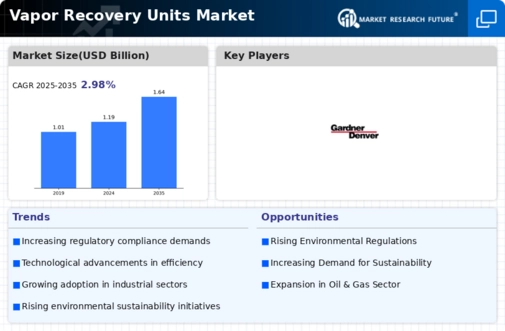
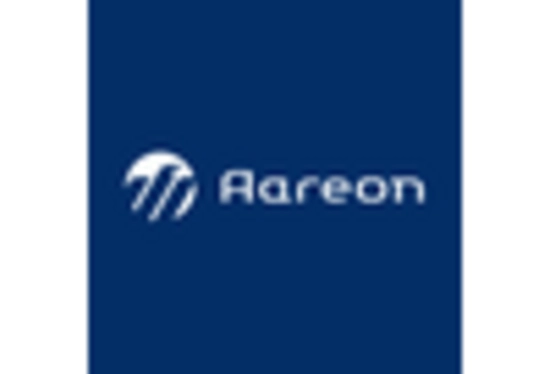
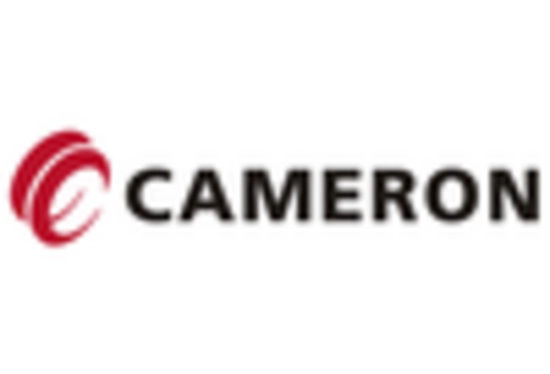
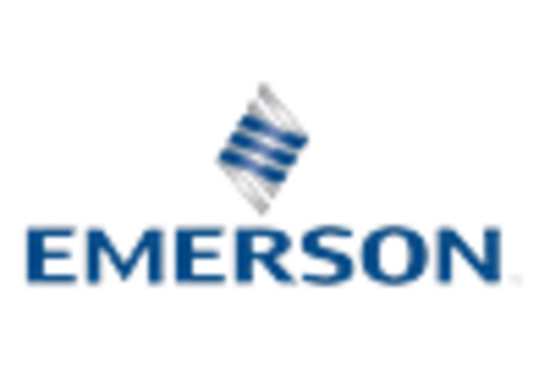
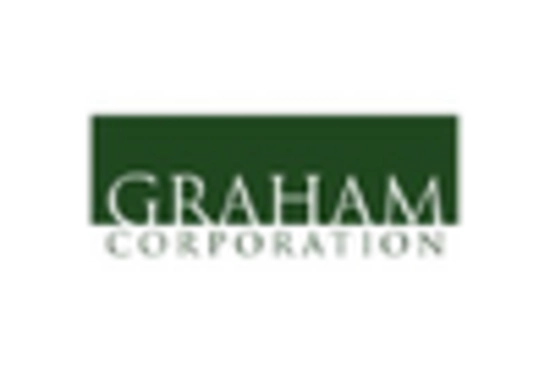
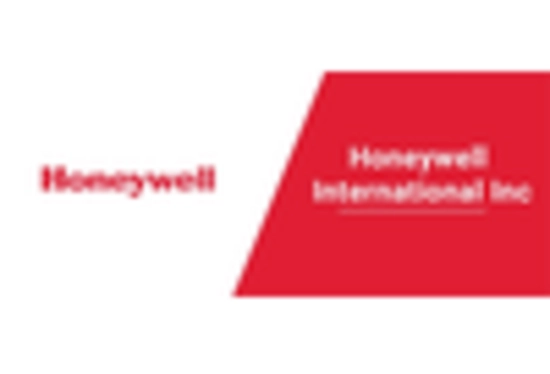
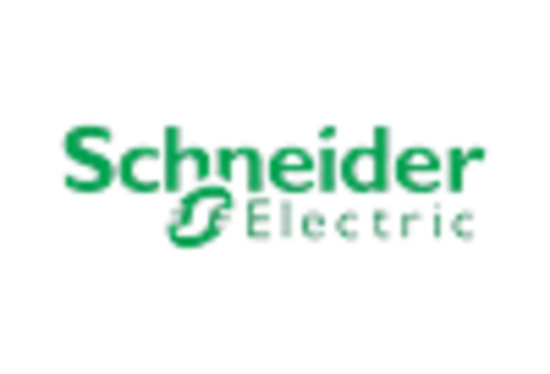

Leave a Comment